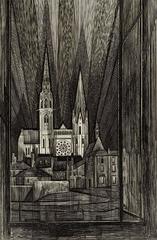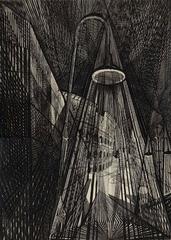Armin Landeck On Sale
1920s American Modern Landscape Prints
Drypoint, Etching
Recent Sales
1950s American Realist More Prints
Engraving
1950s American Realist More Prints
Engraving
1960s American Modern Landscape Prints
Engraving
1930s American Modern Landscape Prints
Drypoint, Etching
1930s American Modern Landscape Prints
Drypoint, Etching
People Also Browsed
20th Century American Modern Figurative Prints
Drypoint, Etching
20th Century American Modern Figurative Prints
Etching, Drypoint
20th Century American Modern Figurative Prints
Drypoint, Etching
1920s American Modern Landscape Prints
Drypoint, Etching
1930s American Modern Figurative Prints
Drypoint, Etching
1930s American Modern Landscape Paintings
Oil, Board
Early 20th Century American Modern Landscape Prints
Handmade Paper, Etching, Drypoint
1990s Contemporary Landscape Prints
Mezzotint
1930s American Modern Figurative Prints
Lithograph
1930s American Modern Figurative Prints
Drypoint, Etching
1930s American Realist Landscape Prints
Drypoint
1940s American Modern Landscape Paintings
Canvas, Oil
2010s American Modern Landscape Prints
Engraving, Mezzotint
1970s American Modern Landscape Prints
Engraving, Etching, Archival Paper
1930s American Realist Landscape Prints
Drypoint
Early 20th Century American Modern Landscape Prints
Etching, Drypoint
Armin Landeck On Sale For Sale on 1stDibs
How Much is a Armin Landeck On Sale?
Armin Landeck for sale on 1stDibs
Printmaker Armin Landeck was born in Crandon, Wisconsin, and spent his childhood in Oshkosh and in Toledo, Ohio. Before enrolling at Columbia University, he studied for two years at the University of Michigan. In New York he took summer classes at the Art Students League and visited the city's museums and galleries. By the time of his graduation from Columbia in 1927, he had become interested in printmaking and had bought a used press. In 1928 and 1929 he traveled and worked in Europe, seeing the work of the old masters and also modern art, sketching and making etchings wherever he could find an opportunity to use a press. He was greatly interested in the cubist art he saw in Paris, and the angular facets of his early compositions reflect that fascination. Returning to the United States in 1929, he settled on a farm in East Cornwall, Connecticut, but spent a great deal of time in New York City, moving back there in 1935 to teach printmaking. Throughout the 1930s he worked in etching, aquatint, drypoint, and lithography. Study with Stanley William Hayter at the New School for Social Research in New York in the early 1940s led to Landeck's extensive use of the engraving medium, but he continued to work in other etching media as well. In 1953 he was awarded a Guggenheim Fellowship that permitted him to work in Paris and to travel again through Europe. He retired from teaching in 1958 and moved back to his Connecticut farm, where he died in 1984. Landeck focused on the city in much of his work. As a student at Columbia University, Landeck earned a degree in architecture, and this training is reflected in his careful rendering of buildings and their details. In Pop's Tavern, Landeck captured both the look and the mood of an American city in the 1930s. The lighted interiors in Pop's Tavern seem to draw people in from the dark, empty streets.
Finding the Right Prints And Multiples for You
Decorating with fine art prints — whether they’re figurative prints, abstract prints or another variety — has always been a practical way of bringing a space to life as well as bringing works by an artist you love into your home.
Pursued in the 1960s and ’70s, largely by Pop artists drawn to its associations with mass production, advertising, packaging and seriality, as well as those challenging the primacy of the Abstract Expressionist brushstroke, printmaking was embraced in the 1980s by painters and conceptual artists ranging from David Salle and Elizabeth Murray to Adrian Piper and Sherrie Levine.
Printmaking is the transfer of an image from one surface to another. An artist takes a material like stone, metal, wood or wax, carves, incises, draws or otherwise marks it with an image, inks or paints it and then transfers the image to a piece of paper or other material.
Fine art prints are frequently confused with their more commercial counterparts. After all, our closest connection to the printed image is through mass-produced newspapers, magazines and books, and many people don’t realize that even though prints are editions, they start with an original image created by an artist with the intent of reproducing it in a small batch. Fine art prints are created in strictly limited editions — 20 or 30 or maybe 50 — and are always based on an image created specifically to be made into an edition.
Many people think of revered Dutch artist Rembrandt as a painter but may not know that he was a printmaker as well. His prints have been preserved in time along with the work of other celebrated printmakers such as Pablo Picasso, Salvador Dalí and Andy Warhol. These fine art prints are still highly sought after by collectors.
“It’s another tool in the artist’s toolbox, just like painting or sculpture or anything else that an artist uses in the service of mark making or expressing him- or herself,” says International Fine Print Dealers Association (IFPDA) vice president Betsy Senior, of New York’s Betsy Senior Fine Art, Inc.
Because artist’s editions tend to be more affordable and available than his or her unique works, they’re more accessible and can be a great opportunity to bring a variety of colors, textures and shapes into a space.
For tight corners, select small fine art prints as opposed to the oversized bold piece you’ll hang as a focal point in the dining area. But be careful not to choose something that is too big for your space. And feel free to lean into it if need be — not every work needs picture-hanging hooks. Leaning a larger fine art print against the wall behind a bookcase can add a stylish installation-type dynamic to your living room. (Read more about how to arrange wall art here.)
Find fine art prints for sale on 1stDibs today.

